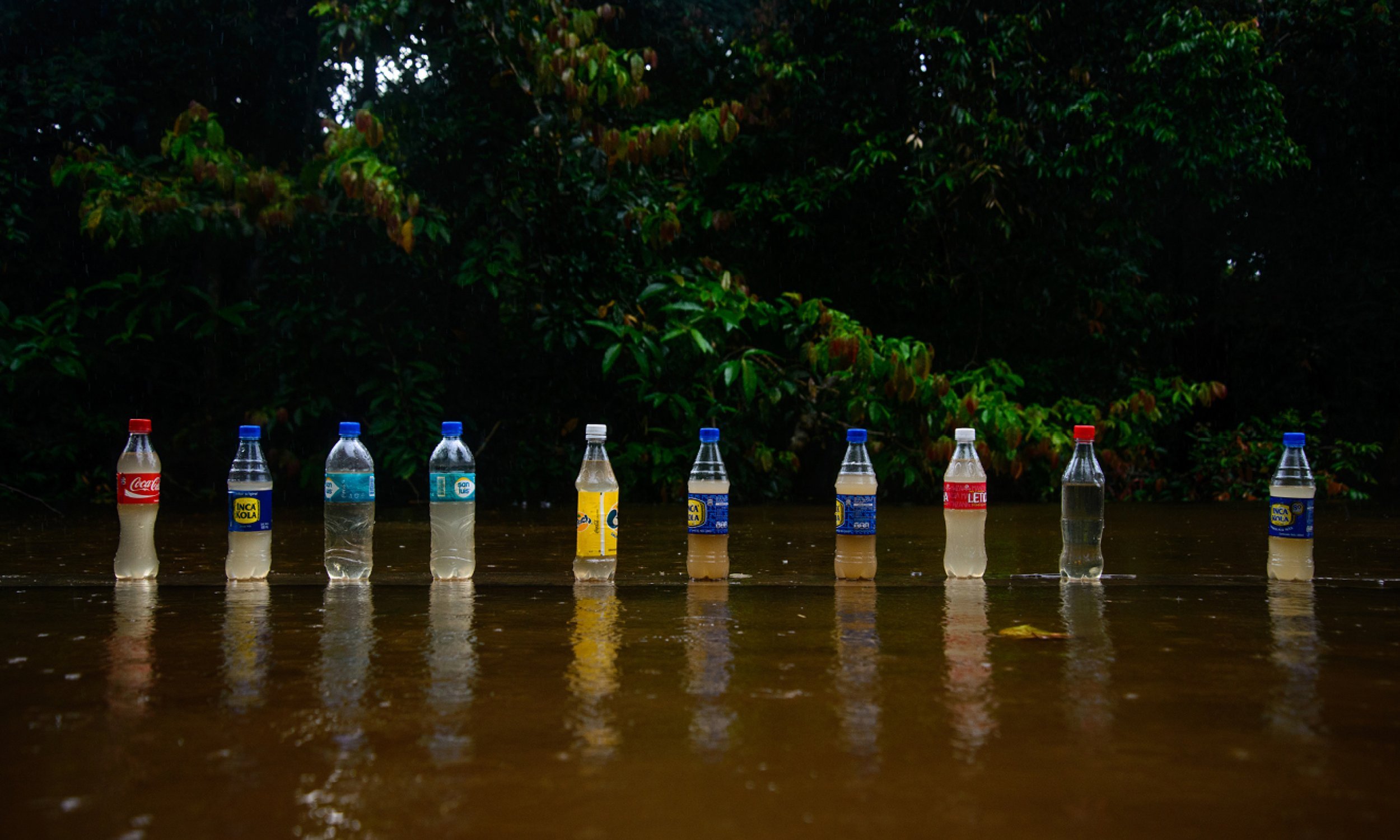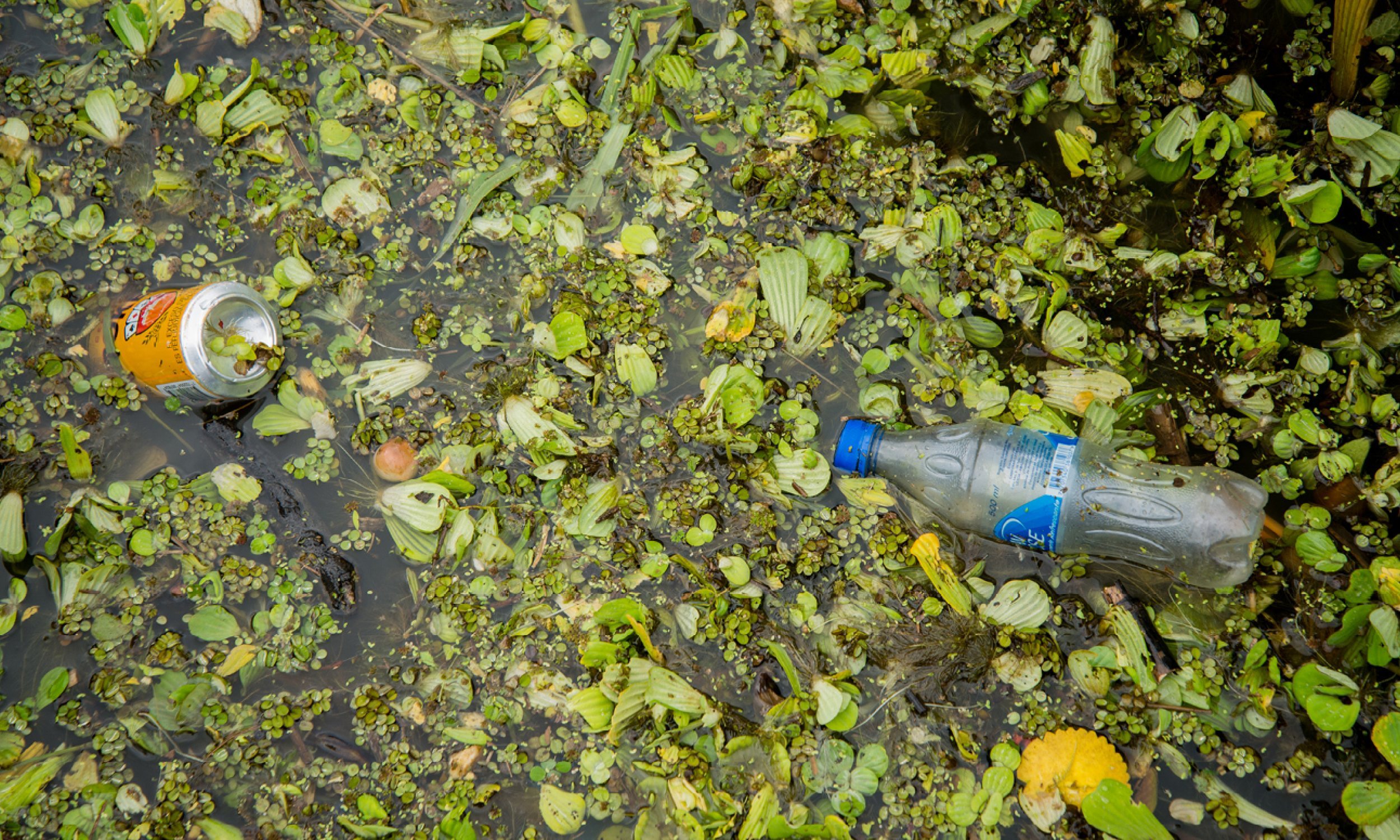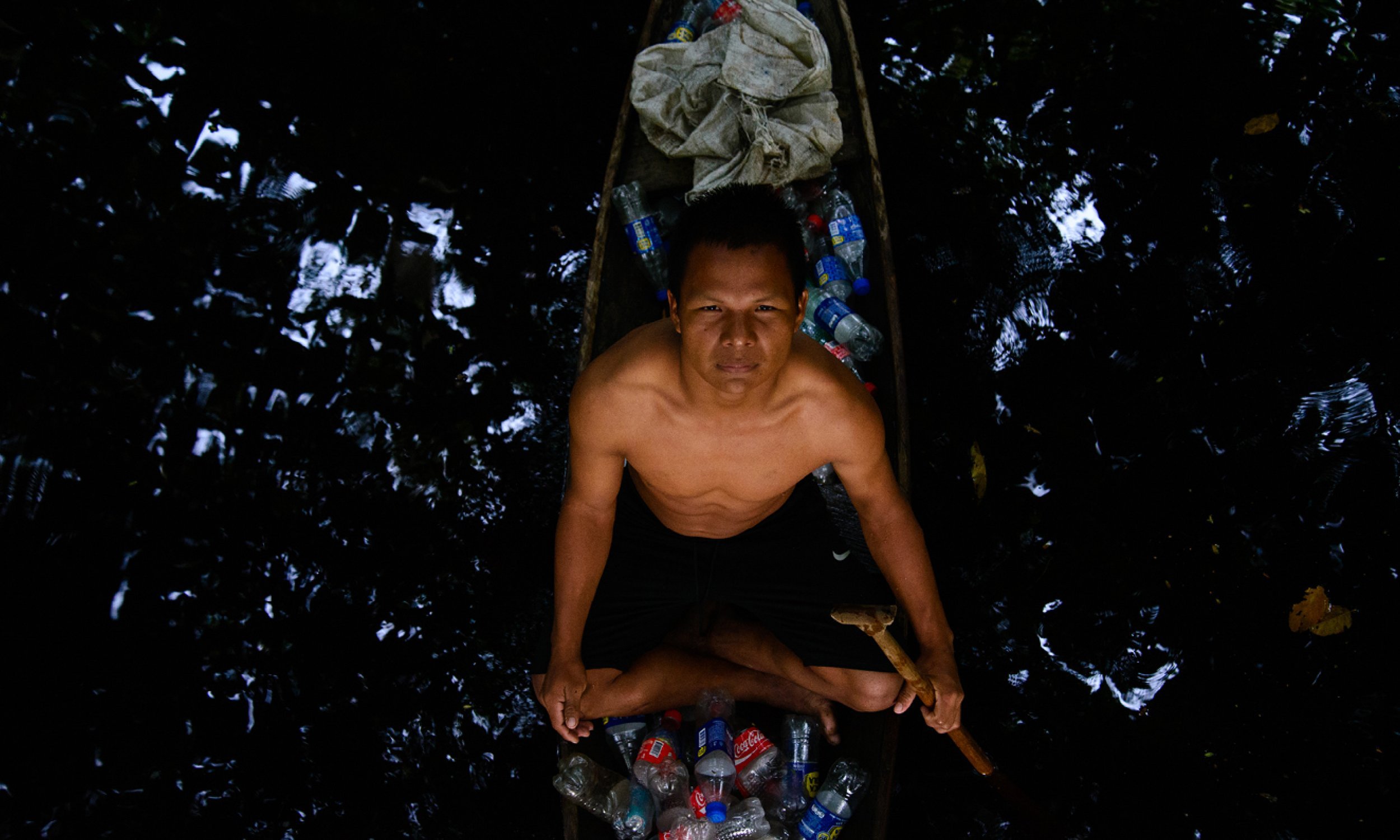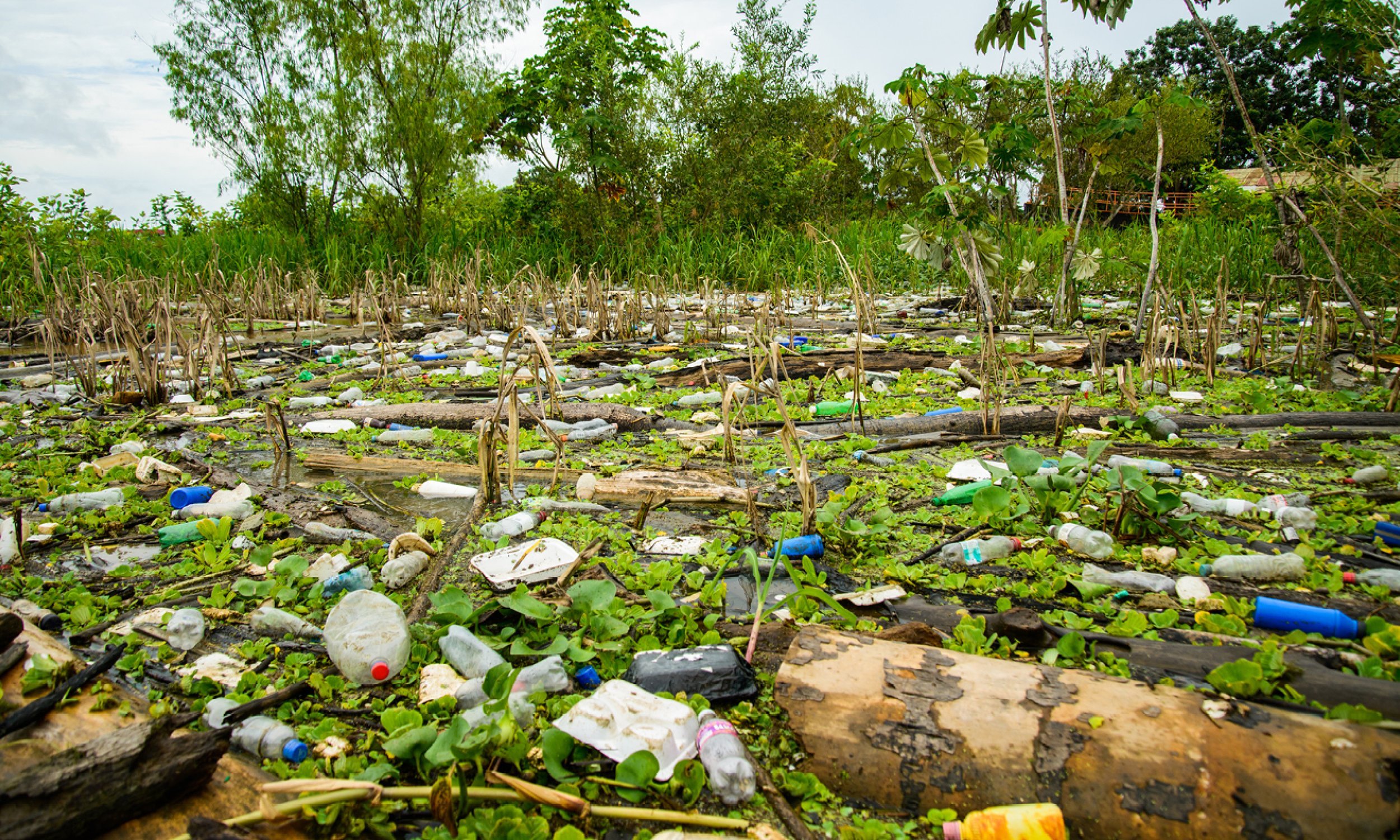In Focus: Juan Amarú Rodriguez
The Colombian Photographer Documenting Plastic Pollution Deep In The Amazon
Juan Amarú Rodriguez was born in Bogota, Colombia, in the late 80s. The self-taught photographer graduated as an industrial designer and has traveled his country, documenting its beautiful elements, and its brutal ones. His series Amazonas Plástica is a journey into Leticia, a city in Southern Colombia next to the Amazon River, where the extent of our planet’s plastic pollution problem is laid bare – hundreds of bottles drifting through water, the detrimental effects of humanity affecting serene, remote, once natural corners of the earth.
Rodriguez is passionate about our need to stop using plastic, and is determined to show “how something that stays in our hands for a few minutes leaves a mark on our planet for 600 years”. His photos demonstrate how the material has reached the most remote places in The Amazon. Once we saw his series, we knew we had to talk to him about his work, the insidious ways that plastic affects our lives, and what needs to be done.
Q & A
How did you first become aware of the scale of our plastic pollution problem, and decide to photograph it?
Juan Amarú Rodriguez: I have been aware about the problem of plastic pollution for many years. Whenever I travel I see it, but it was not until four years ago that I decided to start portraying it in different ways, in different places in Colombia, in order to document and show the damage we cause, and with this draw the attention of humanity.
How does it feel to photograph pollution in such a beautiful, natural part of the world?
Juan Amarú Rodriguez: It is sad and overwhelming to arrive at these magical places in the world and see that they are also victims of plastic. It is like a plague – it hurts to see the Amazon river fill up every day with more plastic bottles, glass, aluminum, among much other garbage, which then ends up in communities close to cities, or in the sea, thus polluting the entire planet. It makes one angry and helpless not to be able to do much beyond reducing one's own consumption, it also generates many questions, such as why do companies like Coca-Cola sell and promote the consumption of plastic in these ecosystems? Why are there no policies that prohibit plastics, especially single-use ones, in these places? What can be done to stop this phenomenon?
Does it ever occur to you that even though the problem is so ugly, photographs of plastic floating in water can be beautiful. Is that a challenge as a photographer?
Juan Amarú Rodriguez: Well, I think that this has been the task and challenge of artists in history, to show tragedies and ugly things in a subtle way, and in one way or another to show it as beautiful. As a photographer, I have the opportunity to show the world’s reality as it is. People are already tired of seeing garbage everywhere, so if you show them an image of reality, they look the other way, evading responsibility. So yes, it is a challenge to portray our reality in such a way that it is "beautiful" and draws people's attention.
You have an incredible photograph in the series of Eliberto carrying what is described as "news fruits". Why are they called that?
Juan Amarú Rodriguez: That description was born during the process of the photographs, talking with Eliberto and his uncle about this problem. They said that the day will come when we have no fruits, no animals to eat other than plastic, and that phrase stuck with me, spinning in my head. It could be a reality if the world continues like this and we do not take serious policies against plastic and pollution in general.
You document people collecting plastic bottles - are they doing so to recycle them in exchange for money?
Juan Amarú Rodriguez: I don't really document the people who recycle and then sell it. In this case I did this work with a Tikuna community near Leticia (the capital of the Amazon department of Colombia), with whom I was working for several days, touring the flooded forests in search of different locations to take these photos. They directly do not collect plastic or sell it – in their community there is a lot of plastic, but a lot of it is burned. Finally it ends up scattered everywhere, traveling throughout the Amazon along its different tributaries and streams.
Are the people you met and photographed creating this series aware of the problem and how it's harming their environment? How do they respond to seeing their landscape affected like this?
Juan Amarú Rodriguez: It is difficult to say that they are really aware, since there comes a point when this problem ends up being part of their reality, then they stop seeing it as a problem, especially the new generations that grow up seeing this as something "natural". The old ones do worry a little just like some young people, but many others you see throwing the packet of potatoes and plastic bottles on the floor, or in the river, without any hesitation. There is a deficit in education for decades in these regions of the country, the presence of the state is greatly needed, of entities that work to stop this catastrophe. If there is no example from above that teaches or shows you along the way, one ends up doing everything thinking that everything is "fine" and the reality is that not everything is fine.
How do you see us finding a way to stop using plastic?
Juan Amarú Rodriguez: It is very difficult to answer this, since plastic took a lot of advantage over us, so much so that we consume microplastics in our food, snow already falls with plastic in the North Pole, there is a "continent" of plastic in the Pacific. I still believe that the change starts with each one of us, being aware of the problem and reducing our footprint. Once we are aware we can work on real policies, attack the big companies like Coca-Cola, which are the ones that most encourage consumption of plastic worldwide. It is not about ending the company, it is about taking responsibility – we have to stop thinking individually and think collectively. We cannot continue condemning life on the entire earth to imminent death by plastic.
“It is like a plague – it hurts to see the Amazon river fill up every day with more plastic bottles, glass, aluminum, among much other garbage, which then ends up in communities close to cities, or in the sea, thus polluting the entire planet.”
Juan Amarú Rodriguez
























